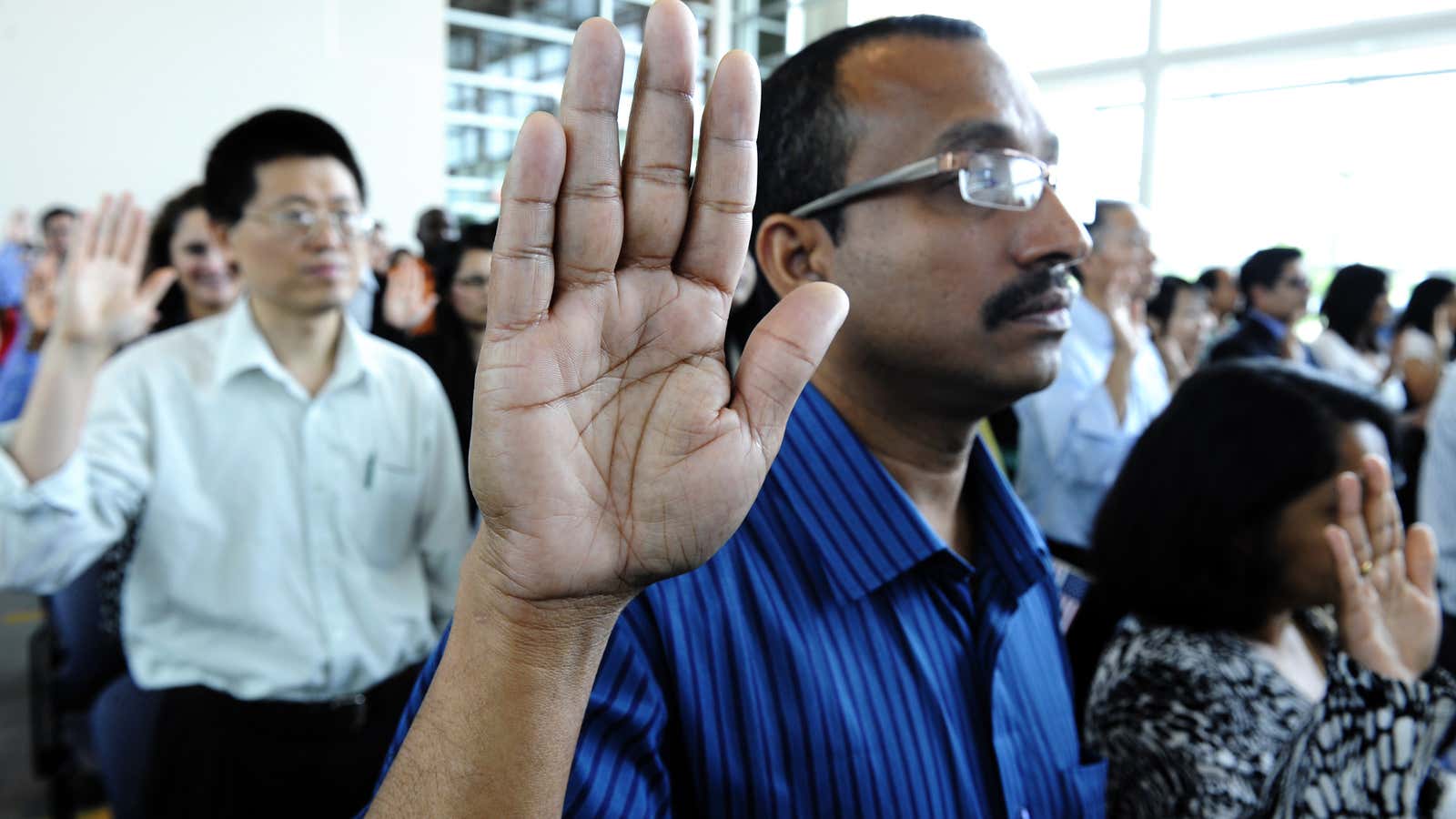For the first time in nine years, the cap on a prized US visa for the most skilled Chinese and Indian workers is set to be reached.
On July 11, the US State Department announced that it would soon stop accepting applications for the EB-1 visa, from Indian and Chinese nationals. This change could cause some highly-skilled immigrants to lose their current US work authorization.
The EB-1 is for immigrants of extraordinary ability, outstanding professors or researchers, and certain executives at multinational companies. In effect, it’s intended for the world’s “best and brightest” who wish to become permanent US residents, and even eventually citizens. Preliminary figures from the US State Department show that 12,253 Indians and 6,239 Chinese were granted EB-1 visas in 2015. The State Department was not able to provide how many of these visas have been issued so far this year.
As of July, the ”priority date” for EB-1 approvals was “current”—meaning that all applications are being considered immediately. However, come August, the priority date will be set to Jan. 1, 2010, for EB-1 applications from Indian and Chinese nationals. That means applicants must have submitted their applications before Jan. 1, 2010, to be considered for the EB-1, this year.
Backdating the deadline, known as “retrogression,” is an administrative maneuver to keep the application queue orderly and manageable when there aren’t enough visas to go around. Since 1991, the priority date for EB-1 has retrogressed from “current” for India three times and for China six times.
Only a limited number of EB-1 visas are available each year, although the exact cap per country is hard to state with certainty because caps depend on a number of shifting factors. A surge in EB-1 applications from one country’s citizens, for example, could cause a decline in the number available to another nation.
For years, it was considered the fastest and most reliable way to gain authorization to permanently stay in the US for work. “The conventional wisdom is try to get into the EB-1 because you don’t have to worry about it,” Susan Cohen told Quartz. “It’s fastest employment-oriented way. Historically it’s always been the fastest.” Cohen is the chair of the immigration practice at Boston-based law firm Mintz Levin.
In the past, Cohen and others in the industry have advised clients to do everything they can to become eligible for an EB-1. A years-long strategy to obtain US citizenship can include getting published in more prestigious publications, working at more highly respected companies, or getting promoted to a managerial position outside the US, before applying. Cohen suspects this last tactic—savvy multinational companies promoting workers they want to transfer to the US—may have caused an increase in demand for the EB-1.
The implication for businesses on the whole should be small, since applicants for the EB-1 typically are already in the US, working on another, shorter-term authorization, according to Cohen. There are still risks, however. Employees currently working in the US on a non-extendable, time-limited visa who have been waiting for EB-1 approval could potentially find themselves forced to leave the US when their time runs out. Switching to permanent residency is desirable because it means not needing employer sponsorship of a visa and never having to renew or extend a visa. It also offers the first step toward becoming a US citizen.
Thankfully for Indian and Chinese workers who still have time on their current US visas, the accounting year for EB-1 allocations begins anew on Oct. 1, 2016. At that time, the 2017 allocation of visas will become available and the priority date will likely be set back to current. In that case, access to these highly sought-after visas will only have been cut off for two months.
